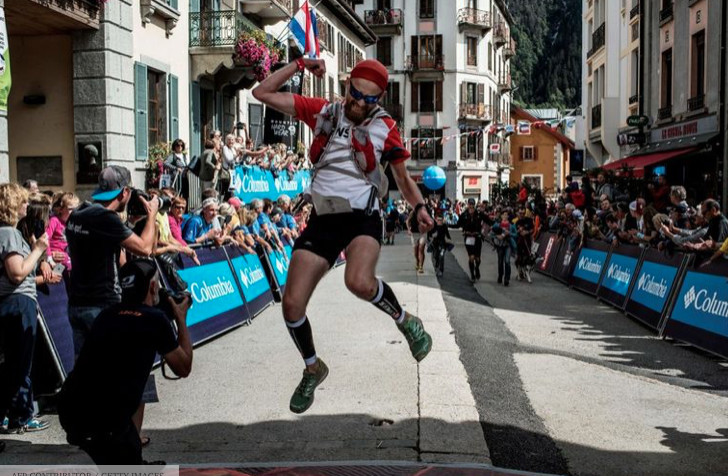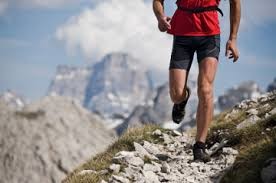Running News Daily
Running News Daily is edited by Bob Anderson. Send your news items to bob@mybestruns.com Advertising opportunities available. Train the Kenyan Way at KATA Kenya and Portugal owned and operated by Bob Anderson. Be sure to catch our movie A Long Run the movie KATA Running Camps and KATA Potato Farms - 31 now open in Kenya! https://kata.ke/
Index to Daily Posts · Sign Up For Updates · Run The World Feed
More People Are Running Ultras Than Ever Before That’s not a guess. It’s a scientific fact.
Ultrarunning has become more mainstream over the past few decades as many runners have turned their attention to the trails to go beyond 26.2.
That’s not just an opinion, it’s a scientific fact backed by the research conducted by RunRepeat and the International Association of Ultrarunning, which teamed up to examine 5,010,730 race results from 15,451 races—roughly 80 percent of all ultras believed to have taken place worldwide since 1996.

With that much data, we can safely make some conclusions about the sport and where it’s headed. (You can read the entire report RunRepeat.) Here’s what stood out to our Runner’s World editors.
It’s no surprise that as ultramarathons enter the mainstream, more people are signing up for races. This is a huge change compared to road races—5Ks have seen a decline since 2015, according to a RunRepeat and World Athletics study, while marathons have leveled off. In comparison, ultras have grown 345 percent since 1996 from 34,401 ultrarunners in 1996 to 611,098 in 2018.
That’s not to say everyone is doing the extreme distances. In fact, only about a quarter of ultrarunners prefer distances over 50 miles .
There is still a massive gender disparity in the ultrarunning world. In 2018, only 16 percent of race participants were female. Yikes! Work needs to be done to rectify that, but the current trend is promising.
That 16 percent represents around 97,700 women, whereas around 4,800 total women competed in ultras in 1996. The overall percentage still needs to tighten up, but it is exciting to see that there have never been more women going beyond 26.2 than right now.

Most numbers seem to point up in the study, except for the average pace we see in races longer than 26.2. On average, ultrarunners are moving at about at 13:16-per-mile pace. That’s 1:41 per mile more than in 1996 when the average pace was 11:35. This is likely because of the increase in amateur participation.
That becomes clearer when we look at the longer race paces that actually become faster when the race is longer. Over 50 miles is typically where you’ll find the most dedicated ultrarunners, which translates to more training and faster times. With this is mind, it also makes sense that the longer distance paces have remained fairly steady over the years whereas the 50K distance has seen the biggest slow down in pace, going down more than 2 and a half minutes slower than in 1996—a 23-percent change.
The average pace may be declining, but females are gaining on—and even passing in some circumstances—the men.
Women have slowed down from a 12:25 to a 13:23—40 seconds—at all distances above the marathon. However, men have slowed down from 11:24 to a 13:21—a 1:57 difference. Yes, that’s a two-second difference between the average paces for the genders.
However, women, on average, are faster than men by 0.6% during races longer than 195 miles. We think Courtney Dauwalter, Camille Herron, and Maggie Guterl would agree with that information.
The average age of participants has gone down by a little over the last decade—43.3 years old to 42.3. It’s not a huge shift, but it’s still a sign that the participants are skewing a little younger.
That’s unlike the rest of the running world that has seen all race’s average ages steadily increase since 1996. When we look at the 5K to marathon, the average age goes up from 39.3 to 42.5, according to a RunRepeat and World Athletics study. The study states this is likely because of more dedicated runners sticking with it into their 60s and 70s.
Don’t let age fool you though. Anyone can run. Take it from George Etzweiler and Gene Dykes.The Demographic Is Getting Younger
The average age of participants has gone down by a little over the last decade—43.3 years old to 42.3. It’s not a huge shift, but it’s still a sign that the participants are skewing a little younger.
That’s unlike the rest of the running world that has seen all race’s average ages steadily increase since 1996. When we look at the 5K to marathon, the average age goes up from 39.3 to 42.5, according to a RunRepeat and World Athletics study. The study states this is likely because of more dedicated runners sticking with it into their 60s and 70s.
Don’t let age fool you though. Anyone can run. Take it from George Etzweiler and Gene Dykes.
The U.S. does Lag Behind the Rest of the World. Some of the best ultarunning talent in the world might come from the U.S. for both men and women, but overall, the country’s average pace is ranked eighth. Taking the podium spots when it comes to average speed over all distances beyond 26.2 miles are:
South Africa (10:36 average pace). Sweden (11:56). Germany (12:01)
After that, the Netherlands (12:41), United Kingdom (12:44), Belgium (13:03), and Australia (13:18) rank ahead of the U.S (13:22).
by Runner’s World
Login to leave a comment




